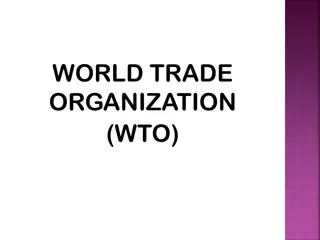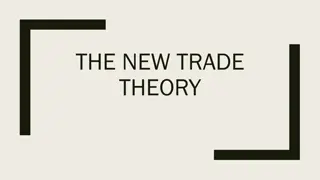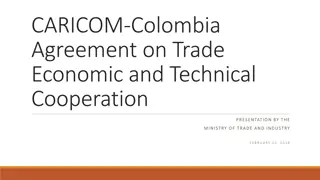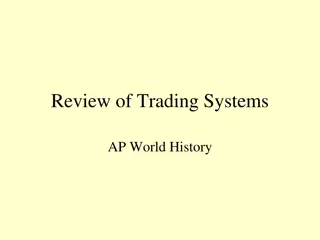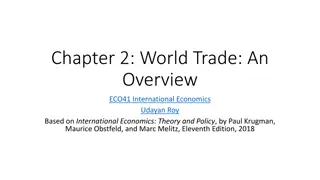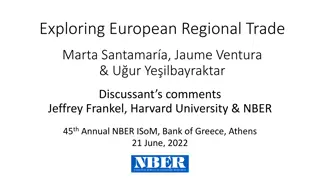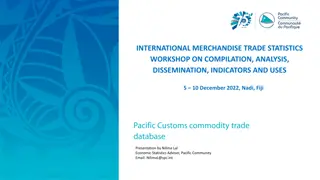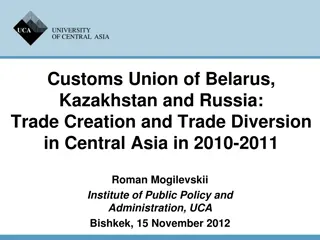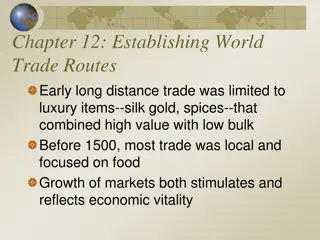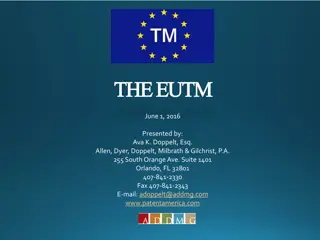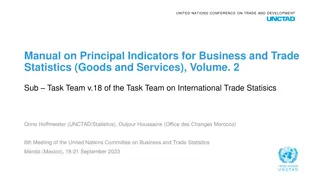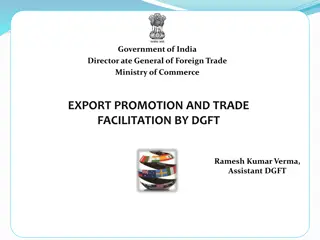Honest Trade Practices and Essential Function of Trademarks
Trade marks play a crucial role in guaranteeing origin and distinguishing goods or services. Understanding the limitations and essential functions is vital for maintaining exclusive rights and allowing fair use in commercial practices.
Download Presentation

Please find below an Image/Link to download the presentation.
The content on the website is provided AS IS for your information and personal use only. It may not be sold, licensed, or shared on other websites without obtaining consent from the author.If you encounter any issues during the download, it is possible that the publisher has removed the file from their server.
You are allowed to download the files provided on this website for personal or commercial use, subject to the condition that they are used lawfully. All files are the property of their respective owners.
The content on the website is provided AS IS for your information and personal use only. It may not be sold, licensed, or shared on other websites without obtaining consent from the author.
E N D
Presentation Transcript
Honest trade practices and the essential function of the trade mark Luigi Mansani University of Parma Trade marks, honest trade, dilution Nijmegen, 13-14 April 2018
Essential function: definition Whereas (16) Directive: The protection afforded by the registered trade mark, the function of which is in particular to guarantee the trade mark as an indication of origin, should be absolute in the event of there being identity between the mark and the corresponding sign and the goods or services. The protection should apply also in the case of similarity between the mark and the sign and the goods or services. It is indispensable to give an interpretation of the concept of similarity in relation to the likelihood of confusion. The likelihood of confusion, the appreciation of which depends on numerous elements ( ), should constitute the specific condition for such protection. www.hoganlovells.com 2
Essential function: definition (2) Whereas (31) Directive: Trade marks fulfil their purpose of distinguishing goods or services and allowing consumers to make informed choices only when they are actually used on the market www.hoganlovells.com 3
Why essential? Essential to acquire and maintain the exclusive right A sign shall have inherent or acquired distinctive character to be registered as a trade mark Revocation if the distinctive character is lost in the trade www.hoganlovells.com 4
Limitations Whereas (27) Directive: The exclusive rights conferred by a trade mark should not entitle the proprietor to prohibit the use of signs or indications by third parties which are used fairly and thus in accordance with honest practices in industrial and commercial matters. In order to create equal conditions for trade names and trade marks against the background that trade names are regularly granted unrestricted protection against later trade marks, such use should only be considered to include the use of the personal name of the third party. Such use should further permit the use of descriptive or non- distinctive signs or indications in general. Furthermore, the proprietor should not be entitled to prevent the fair and honest use of the mark for the purpose of identifying or referring to the goods or services as those of the proprietor. www.hoganlovells.com 5
Further limitations Whereas (27) Directive: Use of a trade mark by third parties to draw the consumer`s attention to the resale of genuine goods that were originally sold by, or with the consent of, the proprietor of the trade mark in the Union should be considered as being fair as long as it is at the same time in accordance with honest practices in industrial and commercial matters. Use of a trade mark by third parties for the purpose of artistic expression should be considered as being fair as long as it is at the same time in accordance with honest practices in industrial and commercial matters. Furthermore, this Directive should be applied in a way that ensures full respect for fundamental rights and freedoms, and in particular the freedom of expression. www.hoganlovells.com 6
Conflicting interests Proprietor's interest to be the only one to use the sign to distinguish products/services Third parties' interest to use the sign not to distinguish products/services Balance: Third parties' uses are allowed if not in the course of trade, or in accordance to honest practices in industrial and commercial matters www.hoganlovells.com 7
Not essential functions: definitions EUCJ C-487/07 (L'Or al) (58) The Court has already held that the exclusive right under Article 5(1)(a) of Directive 89/104 was conferred in order to enable the trade mark proprietor to protect his specific interests as proprietor, that is, to ensure that the trade mark can fulfil its functions and that, therefore, the exercise of that right must be reserved to cases in which a third party s use of the sign affects or is liable to affect the functions of the trade mark. These functions include not only the essential function of the trade mark, which is to guarantee to consumers the origin of the goods or services, but also its other functions, in particular that of guaranteeing the quality of the goods or services in question and those of communication, investment or advertising. www.hoganlovells.com 8
Not essential functions: definitions EUCJ C-482/09 (Budweiser), conclusions of Advocate General Trstenjak, note (26) The functions inherent in or essential or ascribed to a trade mark are manifold. They include, according to legal writing on trade mark law, inter alia the coding, guarantee, origin, identification and individualisation, information and communication, monopolising, naming, quality, distinction, confidence, distribution and advertising functions, without the individual functions always having legal relevance in addition www.hoganlovells.com 9
Why not essential? They are not essential to acquire and maintain the exclusive right They may become relevant only when the trade mark's protection is claimed, against uses that do not affect the distinctive function, but may affect the non-essential functions Are there any special conditions to be met to enjoy protection? Art. 10.2.(c) Directive the sign is identical with, or similar to, the trade mark irrespective of whether it is used in relation to goods or services which are identical with, similar to, or not similar to, those for which the trade mark is registered, where the latter has a reputation in the Member State and where use of that sign without due cause takes unfair advantage of, or is detrimental to, the distinctive character or the repute of the trade mark www.hoganlovells.com 10
Reputation? How to prove it? EUCJ C-375/97 (General Motors) (23) In so far as Article 5(2) of the Directive, unlike Article 5(1), protects trade marks registered for non-similar products or services, its first condition implies a certain degree of knowledge of the earlier trade mark among the public. It is only where there is a sufficient degree of knowledge of that mark that the public, when confronted by the later trade mark, may possibly make an association between the two trade marks, even when used for non-similar products or services, and that the earlier trade mark may consequently be damaged. (25) It cannot be inferred from either the letter or the spirit of Article 5(2) of the Directive that the trade mark must be known by a given percentage of the public so defined. www.hoganlovells.com 11
(continued) (26) The degree of knowledge required must be considered to be reached when the earlier mark is known by a significant part of the public concerned by the products or services covered by that trade mark. (27) In examining whether this condition is fulfilled, the national court must take into consideration all the relevant facts of the case, in particular: the market share held by the trade mark, the intensity, geographical extent and duration of its use, and the size of the investment made by the undertaking in promoting it. www.hoganlovells.com 12
EUCJ C-108/97 and C-109/97 (Windsurfing) and many others (51) In assessing the distinctive character of a mark, the following may be taken into account: the market share held by the mark; how intensive, geographically widespread and long- standing use of the mark has been; the amount invested by the undertaking in promoting the mark; the proportion of the relevant class of persons who, because of the mark, identify goods as originating from a particular undertaking; and statements from chambers of commerce and industry or other trade and professional associations www.hoganlovells.com 13
Unfair advantage of / detriment to distinctive character? The stronger the earlier mark's distinctive character and reputation the easier it will be to accept that detriment has been caused to it: General Motors, 30; EUCJ C-252/07 (Intel), 69 A trade mark with a reputation necessarily has distinctive character, at the very least acquired through use. Therefore, even if an earlier mark with a reputation is not unique, the use of a later identical or similar mark may be such as to weaken the distinctive character of that earlier mark: Intel, 73 Well, easy! Too easy? Proof that the use of the later mark is or would be detrimental to the distinctive character of the earlier mark requires evidence of a change in the economic behaviour of the average consumer of the goods or services for which the earlier mark was registered consequent on the use of the later mark, or a serious likelihood that such a change will occur in the future: Intel, 77 Really relevant in case law of member States? www.hoganlovells.com 14
Without due cause It is for the proprietor of the later mark to establish that there is due cause for the use of that mark: Intel, 39; C-65/12 (Red Bull), 43 ff. Thus, the concept of due cause is intended, not to resolve a conflict between a mark with a reputation and a similar sign which was being used before that trade mark was filed or to restrict the rights which the proprietor of that mark is recognised as having, but to strike a balance between the interests in question by taking account, in the specific context of Article 5(2) of Directive 89/104 and in the light of the enhanced protection enjoyed by that mark, of the interests of the third party using that sign. In so doing, the claim by a third party that there is due cause for using a sign which is similar to a mark with a reputation cannot lead to the recognition, for the benefit of that third party, of the rights connected with a registered mark, but rather obliges the proprietor of the mark with a reputation to tolerate the use of the similar sign (Red Bull, 46). www.hoganlovells.com 15
Without due cause = unfair Red Bull, 47: The Court thus held in paragraph 91 of the judgment in Interflora that where the advertisement displayed on the internet on the basis of a keyword corresponding to a trade mark with a reputation puts forward without offering a mere imitation of the goods or services of the proprietor of that trade mark, without being detrimental to the repute or the distinctive character of that mark and without, moreover, adversely affecting the functions of the trade mark concerned an alternative to the goods or services of the proprietor of the trade mark with a reputation, it must be concluded that such a use falls, as a rule, within the ambit of fair competition in the sector for the goods or services concerned and is thus not without due cause . www.hoganlovells.com 16
"Unfair" advantage The Red Bull judgement defines at following 60 the use falling within the ambit of fair competion as "in good faith", ("if it is demonstrated that that sign was being used before that mark was filed and that the use of that sign in relation to the identical product is in good faith") but the concept seems to be that of "in accordance with honest trade practices". A "proximity" factor shall be taken into account to assess the fairness in an objective manner, i.e. whether the products linked to those covered by the reputed trade mark are "a natural extension" of those previously distinguished by the trade mark. That being the case, the non-essential functions of the reputed trade mark are not affected (no riding on the coat-tails of that mark in order to benefit from its power of attraction, its reputation and its prestige, and no exploitation of the marketing effort expended by the proprietor, thus no advantage unfairly taken of the distinctive character or repute of that mark). www.hoganlovells.com 17
A limitation of the exclusive rights Differently, in Lindt (C-529/07), the concept of "bad faith" at the time of registration is expressly referred to the situation ruled by Art. 52.1.b) of the EUTM Regulation. The concepts of "due cause" and "unfair advantage" seem therefore allowing the alleged infringer to maintain that his use of the reputed trade mark is in accordance with the honest trade practice. As to the essential function, the balance of interests leads to the conclusione that third parties' uses not affecting the exclusive right on the trade mark as distinctive sign are permitted, provided that they are in accordance with honest trade practices www.hoganlovells.com 18
Non-essential functions As to non-essential functions, the balance of interests is more difficult to be found, as the only conditions to acquire and maintain exclusive rights on trade marks are related to the distinctive character. Prove of reputation and of use taking advantage of distinctive character or reputation or detrimental to them are normally satisfied when high distinctive character is proved. Additional defenses are available in limited cases, when the values protected by the non-essential functions are not impaired by a third party's use, as a consequence of a combination of objective and subjective reasons, showing that the use of the trademark was in accordance with honest trade practices, and not aimed at taking unfair advantage of the reputation or the distinctive character of the trade mark www.hoganlovells.com 19
Two final questions for the discussion Can we read the "without due cause" limitation in Red Bull as a defense allowing the third party to prove that no unfair advantage was taken of the distinctive character/reputation of the trade mark? Can we read the evidence, requested by Intel, of a likely change in the economic behaviour of the public of the product bearing the reputed trade mark as a prove, to be provided by the trade mark holder, that the use by the third party is detrimental to the distinctive character or reputation of the trademark? www.hoganlovells.com 20
Second question Are honest trade practices the same in trade mark and unfair competition law? They were until the Directive and Regulation: only distinctive signs and shapes could be protected, need to prove likelihood of confusion, no protections for characteristics resulting from the nature of the product, necessary to obtain a technical result or giving substantial value to the product But, after 1990, there are no unfair competition rules protecting against imitation which does not create confusion (e.g. look-alike), even when the imitation of distinctive elements similar to those characterising a competing product which has a reputation establishes a link in the mind of the public and, without due cause, takes unfair advantage of, or is detrimental to, the distinctive character or the reputation of those elements. Does this difference affect how the honest trade principles shall be applied? www.hoganlovells.com 21
Thank you! luigi.mansani@unipr.it
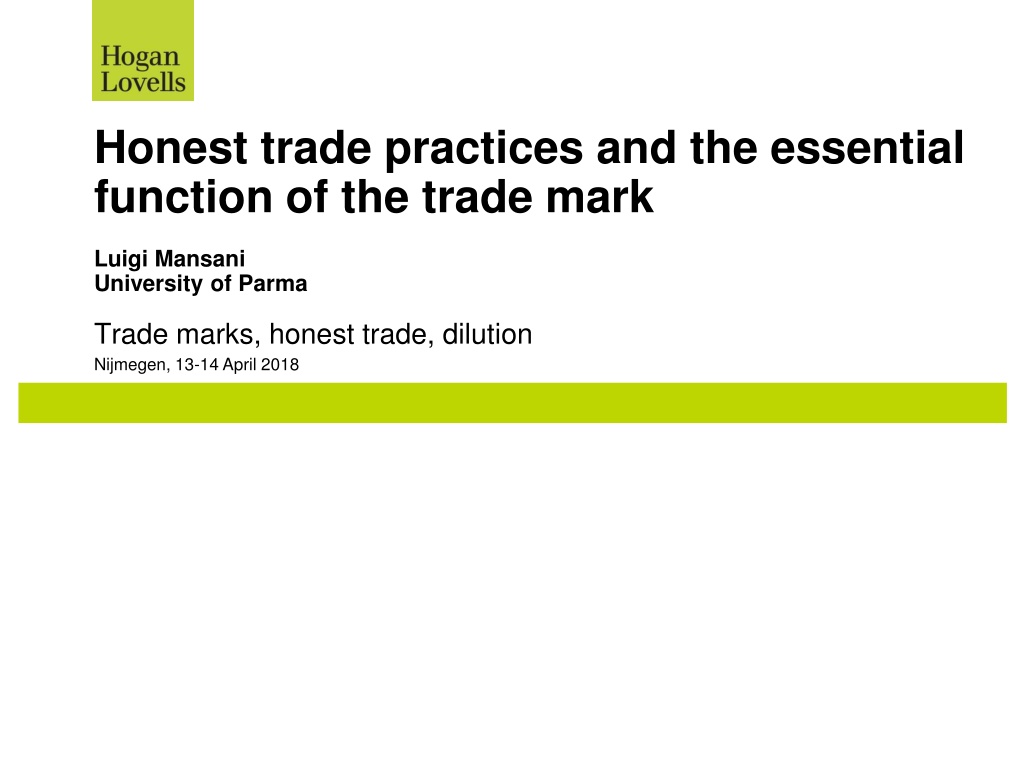
 undefined
undefined









